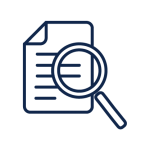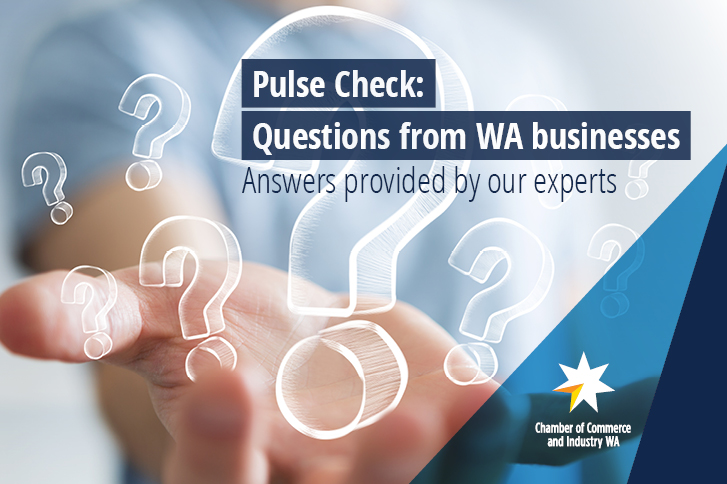CCIWA Mental Health Kit: Part 7 – Return to work and reasonable adjustments
Mental health issues can result in prolonged absences from work in a similar way to physical injuries.
But what can you do to recognise and accommodate workers affected in this way?
There are a wide variety of injuries and illnesses that can affect a person’s ability to come to or remain at work. Mental health issues and illness are no different to physical injuries in this respect.
Despite an increase in awareness of mental health issues over recent years, workplaces still struggle with understanding the impact psychological injuries can have on an individual, unlike tangible physical injuries.
Complicating this further is the fact that even with a formal diagnosis, symptoms experienced, treatment methods and recovery times vary significantly from person to person due to individual differences.
Regardless of the specific injury, getting them back to work as quickly as possible is important. It is well established that the longer an employee is absent from work, the less likely they are to return to work.
Serious conditions can keep an employee away from the workplace for many weeks or months and their return to the workplace requires careful management. Psychological issues are inherently more complex due to the nature of symptoms and interplay of psychosocial factors both outside of and within the workplace.
Whether the mental health issues or psychological injury are work-related or not can impact the approach that is taken in return-to-work activities.
Usually, work-related conditions will be the subject of a workers’ compensation claim, which then requires "injury management" to support the employee back to work using return-to-work programs.
The claim will typically also involve facilitating (and paying for) the injured employee accessing treatment, including medication or counselling/therapy.

Workers’ compensation legislation requires that employers have an injury management system compliant with the Act and that this sets out the process that will be followed in the event of a workplace injury.
Sometimes an employee may choose not to pursue a workers’ compensation claim, or the issues/illness are not work-related. In this case the employee may not wish to seek, or may not be able to afford medical treatment or therapy.
Having a structured policy and using return-to-work programs can be useful in managing return to work whether an employee has a work-related condition or not.
Essentially, the focus needs to be on practical issues such as the capacity of the employee, their safety when returning to work, the safety of other people at the workplace, good communication around expectations, support for the person if they have any difficulties, and ways to minimise any disruptions to the productivity and team dynamic at the workplace.
Good practice activities linked to timely return to work for psychological injuries include:
- regular contact and communication;
- regular review of medical capacity;
- planned and transparent return to work program; and
- tailored program based on the individual's circumstances.
It is critical the employee participates in the return-to-work program, otherwise you will find it difficult to make progress and both the employee and the workplace will lose motivation.
Planning fro a return to work should include the following factors:
- reasonable adjustments to the workplace;
- staged return where appropriate (i.e. returning part-time for the first few weeks);
- monitoring progress (regular informal catch-ups as to progress/problems); and
- medications and their impact on the individual and workplace.

Refer to pro-forma Return to work plan for non-workers’ compensation psychological injuries.
In planning a return to work program for non-workers’ compensation mental health issues, an important step is to identify any work-related factors that may have contributed to, or may add, pressure at work.
Identification of any work stressors may help inform what reasonable adjustments you may make in order to facilitate a return to work.

Identification of work-related stressors should be referred to your safety team as a hazard that may require broader controls.
Considerable research suggests that employees exposed to psychosocial risk factors in the workplace are more likely to experience stress or mental health issues.
The World Health Organization and British Standards Institute identify 10 primary psychosocial hazards1:
- job content;
- workload and workplace;
- work schedule;
- control;
- environment and equipment;
- organisational culture and function;
- interpersonal relationships at work;
- role in organisation;
- career development; and
- home-work interface.

TIP: Worksafe WA, WorkSafe Queensland, WorkSafe Victoria and WorkCover NSW all provide guidance material or fact sheets with additional information on managing work-related stress/psychological injury/ psychosocial risk.
People with mental health issues and/or psychological injuries can experience difficulties with cognitive processes, social interactions and emotions. Most also experience physical symptoms and changes in behaviour or functioning.
Reasonable adjustments are changes or modifications made to work tasks, processes or the workplace environment that enable an employee to perform their work (within their medical capacity).
Unlike physical conditions, the impact of mental health issues on the employee may not be visible or obvious to others. In identifying reasonable adjustments, it is important to consult the employee and, where possible, a medical professional to better identify particular symptoms so that you can match an appropriate adjustment.
| Symptom Category | Possible difficulties or observed behaviours |
| Cognitive - planning | • Difficulty planning and completing tasks
• Difficulty managing time appropriately (meeting deadlines) • Difficulty prioritising work • Avoiding certain tasks that involve problem solving or creative thinking |
| Cognitive - concentration | • Difficulty concentrating
• Short attention span, easily distracted • Difficulty articulating or forming clear thoughts |
| • Difficulty processing information (asking the same question repeatedly)
• Forgetting how to complete tasks or forgetting details of conversations • Avoiding talking to people • Avoiding common areas such as the lunch room |
|
| Behavioural/ Social |
• Sitting further away from others in group settings, looking isolated or withdrawn • Not engaging in conversation unless forced to |
| Physical | • Pain
• Fatigue, sleepiness • Blurred vision • Slow moving or fast moving/agitated |
| Emotional | • Angry
• Irritated • Frustrated • Sad • On edge • Sensitive to criticism, teary • Anxious |
DO NOT make assumptions.
Even with a formal diagnosis, symptoms experienced, treatment methods and recovery times vary significantly from person to person due to individual differences – so making assumptions can be detrimental to the recovery of the individual.
Where the reasonable adjustments are not in relation to a workers’ compensation claim, you should be clear about the duration of the adjustment and any changes to other terms and conditions that will apply.
In some cases the adjustment may be a permanent contractual change. In these cases, a new contact (or signed amendment to the original contract) should be drafted.
You may wish to negotiate other terms, such as wages, for the new role. For example, this may be relevant where the adjustment reduces hours or level of responsibility, such as the employee no longer managing staff.
If it is not intended to be a permanent adjustment, make this clear to the employee by putting the temporary terms in writing, with an end date to the adjusted role or duties. It may also be appropriate to negotiate a new temporary wage where the temporary role is likely to be for a longer duration and will be lesser hours or duties.
A copy of the agreed terms of the adjustment should be signed by the employee.
Also be clear in the letter what steps will be taken, or what will occur contractually, when the end date is reached. For example, this may include automatically returning to full duties subject to a new medical assessment. If the medical assessment says the employee is not fit for full duties, then new terms may be negotiated or they may proceed back onto sick leave.

When an employee has a mental health issue, always make sure they have a support person to assist and advise them in any negotiation about salary or other terms and conditions. Also, make sure they have ample time to understand and consider any offered terms.
All medications can have side effects. These may present when a person first begins taking them, when dosage or frequency is changed, or when someone is ceasing the treatment.
Sometimes the side effects of a medication experienced by an employee poses a safety risk. This is particularly so if the employee is in a high risk environment or operates machinery.
A drug and alcohol or fitness for work policy should outline that employees have a responsibility to take prescription medication in accordance with the normal directions as well as the specific directions (if any) provided
by their medical practitioner. Employees should be required, as part of the policy, to notify their manager or HR when or if they are taking prescription medication that may affect their ability to safely perform the role or when
medication affects the person’s fitness for work (i.e. ability to perform normal work duties productively).
Where an employee declares they are taking prescription medication that may affect their fitness for work or you have observed behaviours that make you question their fitness for work (i.e. irrational behaviour, aggression, slurred speech, blurred vision), you may require further information from a medical practitioner to ascertain their fitness for work.
Most commonly prescribed medications are:
- antidepressants;
- anti-anxiety; and
- mood stabilisers.
Antidepressants
Antidepressants are medications commonly used to treat depression (although they are also effective in treating other health conditions).
Some antidepressants may cause more side effects than others. The most common side effects listed by the FDA include:
- nausea and vomiting;
- weight gain;
- diarrhoea; and
- sleepiness.
Antidepressants
Antidepressants are medications commonly used to treat depression (although they are also effective in treating other health conditions too).
Some antidepressants may cause more side effects than others. The most common side effects listed by the FDA include2:
- nausea and vomiting;
- weight gain;
- diarrhoea; and
- sleepiness.
Where to find more information:
beyondblue www.beyondblue.org.au
mindhealthconnect www.mindhealthconnect.org.au
SANE Australia www.sane.org

FAQs about antidepressants
- There are many different types of antidepressant
- Antidepressants typically take at least two weeks before they start to
- SSRI (selective serotonin re-uptake inhibitor) antidepressants commonly make sleep difficulties/insomnia worse initially, but they are associated with improved sleep 4-6 weeks
- The likelihood of a particular side-effect happening varies between individuals and
- Stopping medication can lead to a discontinuation syndrome (can last seven days and consists of flu-like symptoms, although in some cases the reaction can be more severe).
Anti-anxiety
Anti-anxiety medications help reduce the symptoms of anxiety.
The most common anti-anxiety medications are benzodiazepines and beta blockers.
Like other medications, anti-anxiety medications may cause side effects. The most common side effects for benzodiazepines are3:
- drowsiness and dizziness;
- nausea;
- blurred vision;
- headache;
- confusion;
- tiredness; and
- nightmares.
Common side effects of beta-blockers include:
- fatigue;
- cold hands;
- dizziness or light-headedness; and
- weakness.
Mood stabilisers
Mood stabilisers are used primarily to treat bipolar disorder, mood swings associated with other mental disorders, and in some cases, to augment the effect of other medications used to treat depression. Mood stabilisers work by decreasing abnormal activity in the brain.
Side effects include:
- itching, rash;
- excessive thirst;
- frequent urination;
- tremor (shakiness) of the hands;
- nausea and vomiting;
- slurred speech;
- fast, slow, irregular or pounding heartbeat;
- blackouts;
- changes in vision;
- seizures;
- hallucinations (seeing things or hearing voices that do not exist);
- loss of coordination;
- swelling of the eyes, face, lips, tongue, throat, hands, feet, ankles, or lower legs.
For advice and guidance on work, health and safety matters contact CCIWA’s Employee Relations Advice Centre on (08) 9365 7660 or email [email protected].

















